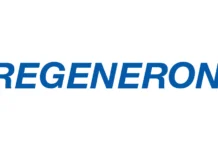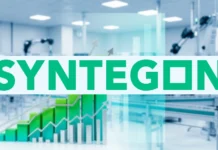As the gene therapy continues to take its course, 2025 marks a very important year when it comes to the quest to unleash its entire potential. This revolutionary medical approach, which happens to involve altering or even replacing defective genes in order to treat or prevent diseases, has gone on to show incredible promise for a range of scenarios, right from rare genetic disorders to more common diseases like cancer or even neurodegenerative ailments. In spite of the significant advances that have been made, this field still faces considerable barriers. In order to overcome these challenges, it is really essential for gene therapy to go ahead and become a mainstream, sustainable, and even an accessible treatment option across the world.
It is well to be noted that the spectrum of gene therapy in 2025 goes on to reflect tremendous progress and even hurdles. As per the recent industry data, the number of gene therapy clinical trials across the world happens to grow exponentially, with more than 4000 candidates under development, almost half of which happen to be gene therapy. Regulatory bodies like the USFDA have hastened the approvals, thereby focusing on 10 to 20 new gene therapy approvals every year by 2025. These approvals highlight the growing viability as well as acceptance when it comes to gene therapies within clinical practice.
The challenges surrounding technological and manufacturing processes and addressing them
In spite of the regulatory progress that has been made along with the clinical successes that have been attained, technological and manufacturing challenges still remain major barriers when it comes to widespread adoption of gene therapy in 2025. The viral vector production, which includes the delivery vehicles that transfer the therapeutic gene into the patient cells, still happens to be complex and even costly. In 2025, companies are investing a lot in scalable manufacturing practices, which include consistent manufacturing processes along with automation, in order to meet demands while at the same time reducing the expenses. Advances within vector engineering, like the development of novel adeno-associated virus (AAV) capsids having enhanced targeting capabilities, are elevating the delivery efficiency as well as safety profiles.
It is worth noting that manufacturing bottlenecks go on to limit availability when it comes to gene therapy, especially in the case of rare diseases having small patient populations. But industry is going ahead and tackling these barriers by way of innovations within process intensification along with improved quality control, which help to make sure of batch consistency in addition to regulatory compliance. By 2025, numerous leading batch firms are functionalizing their state-of-the-art GMP facilities, which are dedicated to generating therapy production, thereby highlighting the transition from experimental treatments to commercial-scale logistics.
Global harmonization with regulatory evolution
Navigating the regulatory spectrum is indeed a complex challenge for gene therapies. The novel nature when it comes to therapy requires steep evaluation when it comes to efficacy, long-term effects, and, of course, safety. In 2025, regulatory agencies across the world would continue to refine their framework in order to help speed up the approval pathway without compromising patient safety. The regenerative medicine advanced therapy – RMAT by the FDA—as well as other expedited pathways are becoming quite instrumental when it comes to bringing these therapies faster to the market.
Global harmonization when it comes to the regulatory standards is yet another crucial factor that is unleashing gene therapies’ total potential.
Partnership efforts between authorities like the FDA, EMA, and WHO look forward to establishing common guidelines when it comes to gene therapy development, product manufacturing, and clinical trial design. This kind of alignment decreases the efforts in terms of duplication and also speeds up multinational trials along with streamlining patient access across the world.
Expanding the role of therapeutic – from rare to common diseases
Gene therapy, which was initially focused on rare inherited disorders in 2025, is getting wider into common as well as complex diseases like cardiovascular disease, cancer, and neurodegenerative conditions such as Alzheimer’s. This shift is possible, all thanks to the enhancements that have been made in editing technologies like CRISPR as well as base editing, which happens to offer accurate genetic modifications with decreased off-target effects.
It is worth noting that gene therapies now target not just monogenic diseases, but at the same time, multifactorial conditions as well. For instance, clinical trials are currently underway assessing gene therapies for Duchenne muscular dystrophy, various kinds of cancers, and Rett syndrome, thereby illustrating the widened horizon of gene therapy applications. The potential in order to provide durable, along with one-time treatment for chronic illnesses, goes on to represent a paradigm alteration in medicine.
Overcoming immunogenicity along with delivery barriers
A prominent hurdle when it comes to gene therapy happens to be immune response to viral vectors or gene editing components, which can go on to decrease treatment efficacy or even cause certain adverse effects. In 2025, researchers would be developing new strategies in order to lessen immunogenicity, which includes the use of less immunogenic vectors, novel delivery methods, and even transient immunosuppression protocols.
Efficient, targeted delivery to certain tissues or cell types is indeed critical for therapeutic success. Advances made within nanoparticle-based delivery as well as non-viral vectors are gaining a lot of speed as alternatives or even complements to the viral methods.
These kinds of approaches go on to offer potential advantages like reduced immune activation along with the ability to re-dose the patients if required.
Affordability, accessibility, along with ethical considerations
In order to unlock gene therapies’ total potential, one also needs to address issues in terms of accessibility and affordability. The present gene therapy happens to come with high price tags, which often range between hundreds of thousands and over a million dollars for every treatment, thereby posing significant challenges for healthcare systems as well as patients across the world.
It is well to be noted that gene therapy in 2025 would witness innovative payment models such as outcome-based agreements along with annuity payments are indeed getting piloted in order to spread costs with time and even link reimbursements to clinical benefits. Moreover, expanded manufacturing capabilities as well as technological advancements are anticipated to decrease the production cost by elevating affordability.
Then there are ethical considerations that surround gene therapy, like equitable access, long-term safety tracking, and informed consent, which are increasingly central when it comes to the policy discussions. Industry stakeholders, authorities, and patient advocacy groups are partnering in order to establish ethical frameworks that ensure responsible development and rollout of gene therapies.
Artificial intelligence and data analytics – the effective role they play
It is well to be noted that artificial intelligence, along with big data analytics, is shifting gene therapy research and development. In 2025, artificial intelligence platforms would speed up target identification along with optimizing vector design and even predicting patient responses. Hence reducing the time as well as the cost that is involved in drug development.
In addition to this, machine learning models would also go ahead and facilitate patient certification within clinical trials and track the post-treatment results, thereby supporting a customized medicine approach. The integration when it comes to artificial intelligence with genomic data goes on to promise to unleash novel therapeutic objectives and even enhance treatment accuracy.
In the end – Moving towards the full realization when it comes to gene therapy
Overcoming barriers in order to unlock the full potential of gene therapy goes on to reflect a very intricate but promising journey when it comes to transforming medicine. Due to the advancements made in regulatory alignment, manufacturing, and expanding the therapeutic indications along with innovative delivery systems, gene therapy in 2025 stands on the cusp of mainstream adoption. However, the challenges remain. Addressing cost, immunogenicity, and ethical concerns, along with making sure global accessibility is indeed paramount in order to fulfil the promise of gene therapy. As technological along with regulatory spectrums evolve, partnerships between researchers, industry leaders, and policymakers are going to be very essential in order to shift groundbreaking science into life-changing treatments for patients across the world.
The fact is that the coming years are going to be really critical when it comes to turning gene therapy right from being a niche medical marvel to a foundation of the future of healthcare, which delivers durable, accurate, and even accessible cures for a broad range of diseases.




















